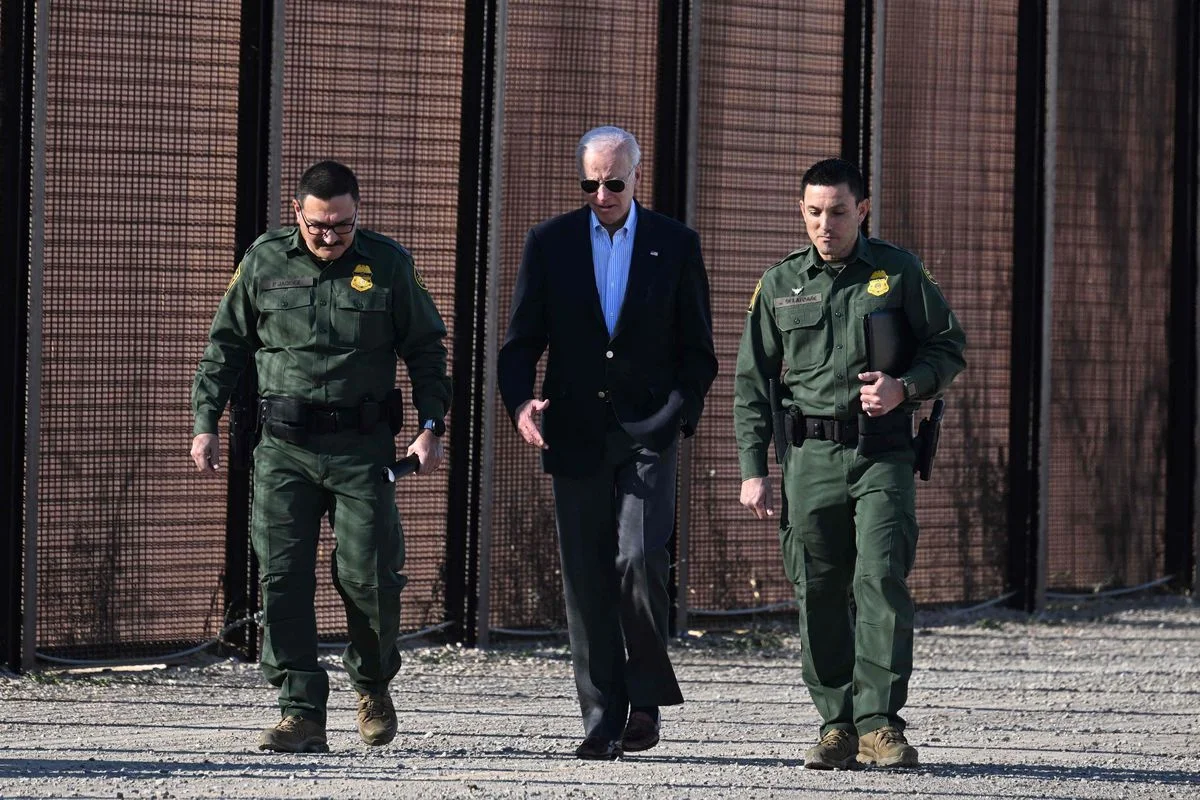In a surprising policy reversal, the Biden administration has announced its intention to construct additional sections of the border wall, aiming to address the escalating influx of migrants crossing into the United States from Mexico. This move represents a significant departure from one of President Joe Biden’s initial actions upon taking office, in which he vowed not to allocate American taxpayer dollars toward further border wall construction. Instead, he had committed to reviewing previously designated resources.
The decision is being seen as a recognition of the formidable challenges posed by the record number of migrant crossings during President Biden’s tenure. Notably, former President Donald Trump, the leading contender for the Republican Party’s 2024 presidential nomination, had made building border barriers a central focus of his first campaign, with his supporters famously chanting, “Build That Wall.”
The necessity to construct these additional sections of the wall arises from the fact that funding allocated during the Trump administration for border wall construction was set to expire by the close of 2023. Utilizing these funds was seen as imperative to avoid violating legal requirements.
Despite this action, the Biden administration is actively calling on Congress to reconsider and reallocate funding for more effective border security measures, such as advanced border technology, as an alternative to physical barriers.
While President Biden initially promised to reverse several of his predecessor’s immigration policies, his administration retained the COVID-era public health order known as Title 42. This order permitted the expulsion of migrants to Mexico without providing them the opportunity to seek asylum. When Title 42 expired earlier this year, it was replaced with a more stringent rule. Under the new regulations, migrants are required to schedule appointments via a government-run smartphone app before approaching a legal port of entry. Those crossing the border illegally now face more rigorous asylum criteria.
The surge in migrant numbers remains a pressing issue, with thousands of migrants from Venezuela seeking refuge, further complicated by strained relations between the U.S. and the Venezuelan government.
In the ongoing fiscal year, Homeland Security Secretary Alejandro Mayorkas reports that Border Patrol agents have intercepted more than 245,000 individuals entering the United States exclusively within the Rio Grande Valley Sector.
This surge in migration has placed considerable strain on U.S. cities along the border, with Eagle Pass, Texas, declaring a state of emergency due to a substantial increase in undocumented immigrant arrivals. In a related development, New York City Mayor Eric Adams embarked on a trip to Mexico, Colombia, and Ecuador to communicate to potential migrants that his city lacks the capacity to accommodate them.
As the Biden administration grapples with the complex issue of border security and immigration, these policy changes reflect the ongoing challenges in managing the border while upholding humanitarian values. The situation remains dynamic, and policymakers are faced with the daunting task of finding effective solutions to address the surge in migrant crossings.




